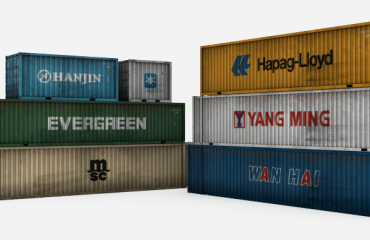We’ve dialed down the top five signs that your storage container is not wind and water tight.
But first, what does wind and water tight even mean to you?
Wind and water tight (WWT) shipping containers are usually older container units about 10 to 15 years old. Due to the durable Corten steel, they have been able to hold up to heavy winds, strong sunlight, and long trips from being on the sea.
With that being said, these containers are used containers. So they are expected to look a little beat up, minor surface rust, scratches, scrapes, dents, etc., but nothing too serious that would affect the durability, structural integrity, or how the container will operate.
Wind and water tight containers have passed all maintenance inspection tests so these containers still get a Wind and WaterTight (WWT) stamp of approval.
Although these shipping containers are not being used for shipping cargo on ships anymore, they are still more than capable of doing their job of keeping all items inside protected from the outside elements.

Here are the top 5 signs that you received a container that is ‘Not’ wind and watertight:
1) Doors Are Not Sealed Tight
These containers should have properly functioning doors with seals that are intact. Wind and water tight containers are supposed to be guaranteed sealed tight around the edges and all sides of the container. This would keep any water or wind from being able to seep in. All items that are inside the container should be protected from everything outside the container.
2) Major Dents and Repairs
There is no surprise that your container will have some dents, scrapes, or scratches due to heavy cargo loads that have been shipped in these containers across the seas. All these imperfections should be minor and small though. If these dents, scrapes, or scratches affect the way the container performs or causes anything inside the container to be damaged, then the container is not wind and water tight.
3) Major Surface Rust and Abrasions
Wind and water tight containers have had their rough share of being exposed to the elements that Mother Nature has to share so there may be some signs of minor rust and corrosion, but can still fully operate. Since the containers are made from Corten steel, also known as weathering steel, the steel becomes stronger when exposed to weather by forming a protective layer when rust starts to develop. However, if the rust increases to the point where it’s causing holes to form, the container is definitely not wind and water tight.
4) Container Doesn’t Rest Flat on Even Ground
If the container is not sturdy when laid flat on even ground this means the container floor boards are not intact. If this is the case, water or any liquid from the can leak into the container. This can also be a sign that the structural integrity of the container has been compromised.
5) Locking Bars Not in Working Condition
The container doors come with steel rotating locking bars that are used to open and close the container door. The locking bars are suppose to completely secure the containers doors from naturally swing open. They have rubber gaskets around the doors from top to bottom to ensure the unit is completely sealed off from outside weather. If the locking bars are not intact or secured on tight, then the container is not wind and water tight.




